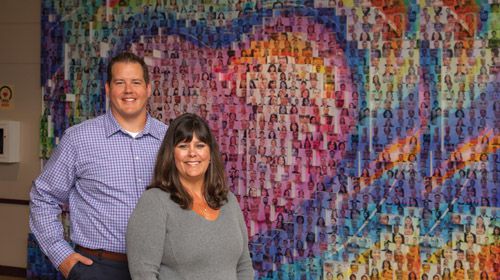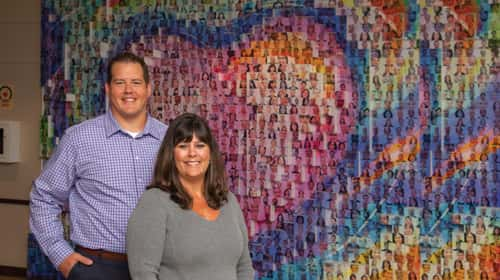
Deborah Yount received the first call at 4 a.m. on October 9. A massive wildfire was raging through north Santa Rosa and the Fountaingrove area, where Medtronic operates a facility that employs 600. Two hours later, Yount, the vice president of human resources for the cardiac and vascular group, together with other leaders mobilized a team to account for and ensure the safety of its large workforce. A lifelong Sonoma County resident who lives in Petaluma, Yount was fortunate to be in a position to help instead of needing to be evacuated.
Medtronic is the largest medical device maker in the world with 84,000 employees across the globe. Santa Rosa is headquarters for two of the company’s divisions––aortic, peripheral and venous, and coronary and structural heart. Its Fountaingrove facility was largely spared by the fire but sustained some damage, and was closed for a month to make repairs and remove the effects of smoke so it could be reoccupied.
An additional 400 Medtronic employees work in its facility on Brickway Boulevard in Airport Business Center, which was outside the immediate fire danger zone. The building became a place of respite for employees, where Medtronic provided counseling, supplies and support for its employees. The Fountaingrove facility officially reopened one week after the fire.
“We had to ensure that they could focus on themselves and their families, and Brickway was a place for them to gather,” says Yount. “The two divisions really came together and supported each other.”
Here’s an overview of how Medtronic and two other Sonoma County businesses took action to manage their companies and employee needs.
Medtronic
When the damage was tallied, 52 Medtronic employees lost their homes. The company hired an insurance consulting service to help those who lost everything, and further assisted in their recovery by offering housing resources, legal and tax advice, grants of up to $40,000 and loans. “That assistance was all rolled out pretty quickly after the fires,” says Yount.
Erik Kunz, director of workplace solutions for Medtronic, says the most important action the company did in the immediate aftermath of the fire was to launch a cross-functional crisis management team to ensure coordinated communications up, down and across the organization.
“That included facility recovery and human needs, says Kunz. “Medtronic has a formal business continuity management process with mitigation plans for a myriad of business risks, and those plans were definitely put to the test with the Sonoma County fires. We are continually refining the plan, not only in response to what happened here, but also other natural disasters that occurred in 2017.”
Kunz says Medtronic also provided immediate help for employees who needed emergency and longer-term housing assistance, and established a special account to which workers could donate––with funds matched by Medtronic––for grants for impacted employees.
The company is also supporting the needs of the community, having donated $1.26 million since October to numerous Sonoma County organizations to help with recovery efforts––short, mid, and long term.
Summit State Bank
 “We learned more about what worked [in our disaster recovery plan] than what didn’t,” explains Jim Brush, president and chief executive officer of Summit State Bank. “We discovered that our staff is as good as we’d hope they would be. Our plan has been in place for a long time and it worked very well, requiring only minor tweaks.”
“We learned more about what worked [in our disaster recovery plan] than what didn’t,” explains Jim Brush, president and chief executive officer of Summit State Bank. “We discovered that our staff is as good as we’d hope they would be. Our plan has been in place for a long time and it worked very well, requiring only minor tweaks.”
Summit quickly established a private Facebook group in the immediate aftermath of the fires for employees to communicate with each other and with the bank. Two employees lost their homes, one has just closed escrow on a house outside the fire zones, and the other plans to rebuild in Coffey Park.
With toxic smoke still filling the air, Summit’s management team came together to make certain that all 70 employees were accounted for. “About 20 [employees] were unable to get to work, and we went to each other’s houses and communicated as best we could by driving around,” says Brush.
While October 9 was supposed to be a bank holiday [Columbus Day], Summit’s IT team and branch operations collaborated to open three of its five locations by the time we opened the following day. “Our headquarters building on Bicentennial Way was cordoned off, and power and communications were down at the Montgomery Village branch,” he adds. “We were able to get staff into key positions to handle what was most critical, and so the bank was totally functional in about 30 minutes after opening our central operations. Customers could access online banking right away.”
To assist the community at large, the bank donated a total of $50,000 to Redwood Empire Food Bank, the Ceres Project, Catholic Charities, The Living Room, The Volunteer Center, St. Vincent de Paul, The 4Cs, Petaluma Animal Services Foundation and Rotary District 5130. “We carefully selected our charity partners so that 100 percent of our dollars were allocated to those most in need,” says Brush.
In the weeks following the firestorm, Summit contacted banks in Houston and Louisiana, (places that had recently lived through major disasters) to learn from their experiences and what to expect in the months and years to follow. “What we heard were comments implying that we will be surprised that one year after the fires, our community will not be as far ahead in our recovery as we believe we should be,” says Brush.
Brush points out that eight months after the fires, less than 10 percent of the necessary home rebuilding has begun in Santa Rosa. “As a business bank, we are seeing a lot of contractors and trade groups needing lines of credit. They invest a significant amount of money in labor and equipment before they can get paid, so they are ramped up way beyond their normal capacity, and there’s a lot of operating expense upfront before the insurance money is received way down the road.”
A huge influx of cash is continuing to flow into the county from insurance proceeds, says Brush. “This could go on for a couple of years. Some people who lost homes have not yet settled with their insurance companies, or are not fully settled. Quite a few people have resolved most of their insurance issues, but some haven’t resolved any. So many are unsure how they will move forward. It’s all still unfolding. We’ve seen a lot of raw emotions and foresee many challenges still ahead. This is going to be a long recovery.”
Keysight Technologies
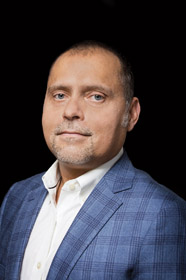 In the early morning hours of October 9, Keysight Technologies was in the crosshairs of the fast-moving Tubbs fire. But thanks to several parking lots and many forested acres surrounding the structures on its vast Fountaingrove Parkway campus, it escaped catastrophic damage. Still, early news reports incorrectly stated that the company’s Santa Rosa headquarters had been destroyed. Local Keysight leadership wasted no time asking the media to clarify that reports of its destruction had been greatly exaggerated.
In the early morning hours of October 9, Keysight Technologies was in the crosshairs of the fast-moving Tubbs fire. But thanks to several parking lots and many forested acres surrounding the structures on its vast Fountaingrove Parkway campus, it escaped catastrophic damage. Still, early news reports incorrectly stated that the company’s Santa Rosa headquarters had been destroyed. Local Keysight leadership wasted no time asking the media to clarify that reports of its destruction had been greatly exaggerated.
Meanwhile, Keysight management was attempting to locate all 1,503 of its workers to ensure their safety, says Hamish Gray, the company’s senior vice president. “With all types of disasters, you always come away with learnings, and the biggest challenge we had was with our employees’ emergency contact information. If your emergency contact is your home number and your home just burned down or you were evacuated, you can’t be reached that way.”
Keysight was confident that its workers would call a special phone line that provides company status updates year-round, as well as check a private website they can access for updated information. Social media proved to be the best way to hear from and keep employees in the loop.
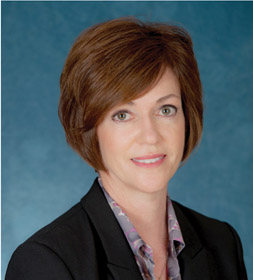 “We used email, text messages, social media and website updates, and that forced us to condense our message,” explains Ingrid Estrada, senior vice president and chief people and administrative officer at Keysight. “As it turned out, using all these methods was much better than trying to reach out by phone.”
“We used email, text messages, social media and website updates, and that forced us to condense our message,” explains Ingrid Estrada, senior vice president and chief people and administrative officer at Keysight. “As it turned out, using all these methods was much better than trying to reach out by phone.”
Gray says that locating employees after a disaster should be priority one. “There are so many technology tools available today to reach people that there’s just no excuse not to.”
Immediately after the fire moved through, Keysight established an employee relief center that provided meals, supplies and needed services for those who had lost homes or were evacuated indefinitely. Temporary housing aid, insurance and financial counseling, and even free Uber rides for those who also lost their cars, was offered. In addition, Keysight gave $10,000 in assistance to each employee who lost a home, and $1,000 to each employee evacuated or displaced.
“Not only did we look out for the physical safety of our employees, but we went further by having mental health support and counselors available onsite,” says Estrada. “Even now, eight months after the fire, that benefit is still ongoing and has been helpful to our employees.”
By June, Keysight’s global workforce had donated more than $1 million in cash and vacation time to help their fellow employees in Santa Rosa who lost 119 homes. Workers who had to relocate temporarily into leased offices in Sonoma County while repairs were being made to fire-damaged buildings have now returned to the headquarters. Earlier this summer, the company hosted a gathering for 3,000 people to celebrate the reopening of the buildings.
“This disaster reminded us just how resilient and committed our employees are,” says Gray.
Disaster planning crucial
All companies—large and small—need a disaster preparedness plan and a business continuity plan, adds Gray. “It’s so ingrained in our culture at Keysight, and we conduct intense exercises to train people and have backup plans. You can never be overprepared for a disaster, and every single one brings with it a new challenge. Every year we practice for different types of disasters to make certain our business continuity plan is solid, but I don’t remember ever practicing a wildfire scenario for Santa Rosa.”
It sounds simple, adds Estrada, but disaster and continuity plans need to be carefully thought out and taken seriously. “It was an important aspect for us to recover as quickly as we did because we had a well-rehearsed process in place and could execute it immediately.”
She says the company may designate the anniversary of the Tubbs fire for its annual request for emergency contact information from workers. “It will serve as a reminder to them. It’s not only a procedural request, it’s become a real life necessity.”
The Housing Challenge
The quest to build new housing and rebuild the homes that were lost in the October firestorm has now come into sharp focus for many local employers, who were already facing recruitment challenges before the disaster struck.
“Since the fire, I believe more people are open to fast-tracking new housing projects, and the right types of projects are being discussed, such as downtown apartments,” says Hamish Gray, senior vice president at Keysight. “I’m more hopeful today that we will have the right housing in place in 18 to 24 months than I was prior to the fire.”
Deborah Yount, Medtronic’s vice president for the cardiac and vascular group, says the company is working to help address the housing crisis. “This is the biggest concern for Medtronic, just as it is for many employers in Sonoma County. It’s probably the most important issue facing our local economy.” In June, Habitat for Humanity Sonoma County announced it would be building temporary cottages at the Medtronic Fountaingrove site. Medtronic donated the lease of the land for $1 a year, and the Medtronic Foundation donated $100,000 to Habitat’s relief efforts in Sonoma County.
How to Help, Whom to Help
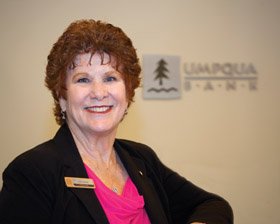 Senior executives of Oregon-based Umpqua Bank flew in to see the devastation in Santa Rosa for themselves shortly after the Tubbs fire raged through. They gave Linda Carlson, area manager of 16 Umpqua branches in Sonoma, Napa, Mendocino and Lake counties, complete autonomy.
Senior executives of Oregon-based Umpqua Bank flew in to see the devastation in Santa Rosa for themselves shortly after the Tubbs fire raged through. They gave Linda Carlson, area manager of 16 Umpqua branches in Sonoma, Napa, Mendocino and Lake counties, complete autonomy.
“My superiors told me to do what I needed to do, and they asked, ‘What do you need?’ I said we were still trying to figure that out. So the president and chief executive officer allocated $40,000 to distribute to the Sonoma County branches,” says Carlson.
Most of the branch managers used half the money to buy gift cards that could be handed out to customers and others who were impacted. “We all had these cards with us all the time, and if we overhead someone talking about their dire situation, we gave them a gift card,” she explains. “One hundred percent of our money was used to help individuals in our community. I did receive gift cards from other departments within the company and personal friends that I gave to the three associates who lost their homes. The company also gave money directly to these three associates as well as a lesser amount to every employee working within Sonoma County. These associates showed up each morning and stayed until smoke required us to close an office.”
Umpqua also sponsored a bowling party for all the students of Anova school and offered a free Santa’s Workshop. Each child and family received a picture with Santa and Mrs. Claus, along with a gift.
When a disaster strikes, says Carlson, you think about the safety of your workers and your customers first. “We have a phone tree for calling our employees, and that certainly helped. I also had a call each morning at 7:30 with my managers to find out whether offices could open as well as which associates could come in or not. If we needed to move associates to another store to ensure customer coverage, we could do that prior to opening. Some were too emotional to come to work. We looked at how we could help and who we could help.” Counselors were brought in to meet with employees and their families. The counselors also helped our associates learn how to best console grieving customers. Of approximately 80 Umpqua employees in the four-county area, three lost homes.
Umpqua Bank had a disaster preparedness plan that it rolled out successfully, yet there was one problem Carlson hadn’t anticipated. “We quickly needed to find day care for some of the employees. We had mothers and fathers who wanted to come to work, but the schools were closed, and it was two to three weeks before schools reopened. That was a real eye-opener that had not happened to us before, and we’ll be looking at how to remedy that.” Since then, Umpqua has made a plan allowing children of employees to come to office locations should such a disaster occur again anywhere within the Umpqua footprint.
As quickly as possible after the fires, Carlson personally drove to each Sonoma County branch to leave cases of water and face masks for handing out to customers. “We had people coming into the banks wearing masks. Normally, when you work in a bank, you don’t want to see that,” she adds with a laugh. Everyone on staff wore masks to help manage the smoke, and masks were also offered to anyone who came in needing one.
Tips from Companies with Solid Plans
If your business doesn’t already have an emergency preparedness plan, it’s time to create one so you’ll be ready if and when disaster strikes again. Here’s some advice from companies with solid plans in place.
Medtronic’s facilities manager, Eric Kunz, says to first ensure that you have a way to account for your employees and communicate with them under disaster conditions. “Commit to taking care of people first and go outward from there.” He also recommends developing a crisis management team.
“Don’t let perfection get in the way of ‘good enough.’ Your preparedness plan will never be perfect, but something is better than nothing. Over time, commit to continually reviewing, testing and improving your plans.”
Jim Brush, president and CEO of Summit State Bank, says banking institutions are required by law to have a Business Continuity Plan. “We conduct many exercises for emergency responses to different crisis situations, even a terrorism drill. We go through a risk assessment twice a year to look at the likelihood of something happening, from remote to never and from possible to probable. We want to be as prepared as possible for any type of disaster.”
Among many lessons learned from the October fire disaster, says Roni Brown, the bank’s vice president and marketing director, is the importance of having current contact information for all your employees, customers and vendors. “And while our bank practices and documents all the steps needed in the event of an emergency, none of us ever dream of having to actually put that plan into action.”
Medtronic’s vice president of human resources for the cardiac and vascular group, Deborah Yount, says that no matter what your disaster plan may be, “even if you don’t think you’ll ever use it, you need that mental exercise.”
Author
-

Jean Doppenberg is a lifelong journalist and the author of three guidebooks to Wine Country.
View all posts


